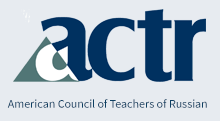Russian Language Journal
Keywords
Minority language instruction, Indigenous language teaching, social-cultural reproduction theory, correspondence theory, Russia
Abstract
Russia is an incredibly diverse country, both linguistically and ethnically. However, Russia is often presented, and presents itself, as a monolith. Russia’s approach to minority language teaching further perpetuates this monolithic view by creating a hierarchical language structure with Russian at the top. This hierarchy is created through societal pressure, language requirements in the Russian education system, and the minimization of minority language instruction, in direct contrast to best practices for language instruction. Chuvash in Chuvashia and Nenets, Khanty, and Selkup in the Yamalo-Nenets Autonomous Okrug serve as examples of this linguistic hierarchy. This paper uses social and cultural reproduction theory alongside correspondence theory to explore the maintenance of Russian as the dominant language.
Recommended Citation
Braun, Nadezhda
(2023)
"Minority Language Education in Russia: An Example of Social and Cultural Reproduction and Correspondence Theories,"
Russian Language Journal: Vol. 73:
Iss.
1, Article 2.
Available at:
https://scholarsarchive.byu.edu/rlj/vol73/iss1/2
Included in
Bilingual, Multilingual, and Multicultural Education Commons, First and Second Language Acquisition Commons, Indigenous Education Commons, Language and Literacy Education Commons, Slavic Languages and Societies Commons, Social Justice Commons, Soviet and Post-Soviet Studies Commons

